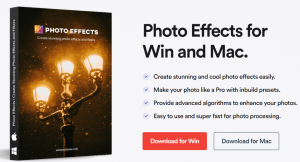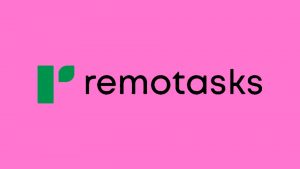Facebook Ads have emerged as a powerful tool for businesses to reach their target audience, increase brand awareness, and drive conversions. However, managing Facebook Ads can be a complex task, requiring a deep understanding of the platform’s features and a strategic approach to campaign creation and optimization.
This article is designed to guide you through this process. Whether you’re a seasoned marketer looking to brush up on your Facebook Ads skills or a beginner just starting out, this article is for you.
We’ll start by exploring the basics of Facebook Ads management, including how to create effective ad campaigns and how to optimize them for better results. This will be followed by an analysis of the advanced features of Facebook Ads, such as Custom Audiences, Lookalike Audiences, and the Facebook Pixel. We’ll also provide tips on how to analyze your ad performance and make data-driven decisions.
But that’s not all. We understand that every business is unique, with its own set of challenges and goals. That’s why we’ve included a range of real-world examples and practical tips throughout the article. These insights will help you apply what you’ve learned to your own business, regardless of its size or industry.
Let’s now dive right into it and discover how this powerful tool can drive success for your business. Whether you’re looking to increase your brand awareness, drive more traffic to your website, or boost your online sales, mastering Facebook Ads management is a crucial step on the path to success. Happy reading!
Understanding Facebook Ads Management
Facebook Ads Management has emerged as a pivotal skill in the digital marketing landscape. It involves creating, optimizing, and analyzing advertising campaigns on Facebook. But what does this entail? Let’s delve deeper.
Creating Compelling Facebook Ads
The first step in Facebook Ads Management is creating compelling ads. This involves understanding your audience and crafting ads that resonate with them. You need to know who your target audience is, what their interests are, and what kind of message will appeal to them.
Creating compelling ads also involves choosing the right format for your ads. Facebook offers a variety of ad formats, including image ads, video ads, carousel ads, and more. The format you choose should align with your campaign objectives and audience preferences.
Optimizing Your Campaigns
Once your ads are up and running, the next step is optimization. This involves monitoring the performance of your ads and tweaking them for better results.
Optimization can involve a variety of strategies. For example, you might adjust your bidding strategy to get more value from your ad spend. Or you might test different versions of your ads to see which one performs better.
Analyzing Your Facebook Ads Campaign Performance
Analyzing your campaign performance is a critical part of Facebook Ads Management. This involves using Facebook’s analytics tools to gain insights into how your ads are performing.
You can track a variety of metrics, including impressions, clicks, conversions, and more. By analyzing these metrics, you can gain insights into what’s working and what’s not in your campaigns.
Tweaking Your Facebook Ads Campaigns for Better Results
Based on your analysis, you might decide to tweak your campaigns for better results. This could involve making changes to your ad creatives, targeting options, bidding strategy, or other aspects of your campaigns.
Tweaking your campaigns is an ongoing process. It involves continually testing new ideas, analyzing the results, and making adjustments based on what you learn.
It should be noted that Facebook Ads Management is a complex process that involves creating compelling ads, optimizing your campaigns, analyzing your performance, and tweaking your campaigns for better results. By mastering these skills, you can drive success in your Facebook advertising efforts.
Creating Effective Facebook Ads Campaign
Mastering Facebook Ads management begins with learning how to create effective ad campaigns. This process involves several key steps, each of which plays a crucial role in the success of your campaigns.
Setting Clear Objectives of the Facebook Ads
The first step in creating an effective Facebook ad campaign is setting clear objectives. What do you hope to achieve with your campaign? Are you looking to increase brand awareness, drive traffic to your website, or boost online sales? By setting clear objectives, you can tailor your campaign to meet these goals and measure its success more accurately.
Defining Your Facebook Ads’ Target Audience
Once you’ve set your objectives, the next step is defining your target audience. Who are the people you want to reach with your ads? You can define your audience based on a variety of factors, including demographics, interests, behavior, and more. Understanding your audience is crucial as it allows you to create ads that resonate with them and meet their needs.
Designing Engaging Facebook Ad Creatives
The next step is designing engaging ad creatives. This involves creating compelling visuals and copy that grab your audience’s attention and inspire them to take action. Remember, your ad creatives should align with your brand identity and speak directly to your target audience.
Setting an Appropriate Budget for the Facebook Ads
Finally, you’ll need to set a budget for your campaign. How much are you willing to spend to reach your objectives? Setting an appropriate budget involves balancing your marketing goals with your financial resources. It’s important to remember that while spending more can increase your reach, it’s the quality of your ads and the relevance of your audience that ultimately drive success.
As noted herein, creating effective Facebook ad campaigns involves setting clear objectives, defining your target audience, designing engaging ad creatives, and setting an appropriate budget. By mastering these steps, you can create Facebook ad campaigns that not only reach the right people but also drive meaningful results for your business.
Optimizing Your Facebook Ads Campaigns
Once your Facebook ad campaigns are up and running, the journey doesn’t end there. The next crucial step is optimization. This process involves analyzing your ad performance, testing different variations of your ads, and making necessary adjustments to improve your results. Let’s delve deeper into each of these aspects.
Analyzing Your Facebook Ads Performance
The first step in optimizing your campaigns is analyzing your ad performance. Facebook Ads Manager provides a wealth of data about how your ads are performing. Key metrics to monitor include impressions (how often your ads are displayed), reach (how many people saw your ads), clicks (how many times your ads were clicked), and conversions (how many times a user completed a desired action, such as making a purchase or signing up for a newsletter).
A/B Testing Your Facebook Ads
Once you have a clear understanding of how your ads are performing, you can start testing different variations to see what works best. This is often done through A/B testing, where you change one element of your ad (such as the headline, image, or call-to-action) and see which version performs better. By continually testing and refining your ads, you can improve their effectiveness and get more value from your ad spend.
Making Necessary Adjustments
Based on the insights gained from analyzing your ad performance and A/B testing, you can make necessary adjustments to improve your results. This could involve tweaking the ad creative, adjusting the targeting parameters, or changing the bidding strategy.
For example, if you find that your ads are getting lots of impressions but few clicks, this could indicate that while your ‘targeting’ is effective (you’re reaching the right people), your ad creative may not be compelling enough to prompt users to click. In this case, you might test different headlines or images to see what resonates more with your audience.
On the other hand, if you’re getting lots of clicks but few conversions, this could suggest an issue with your landing page or the alignment between your ad and the landing page. You might need to optimize your landing page or ensure that the promise made in the ad is clearly delivered on the landing page.
Therefore, optimizing Facebook ad campaigns is an ongoing process that involves careful analysis, continual testing, and strategic adjustments. By mastering these steps, you can maximize the effectiveness of your campaigns and achieve better results.
Analyzing Your Facebook Ads’ Performance
Analyzing your Facebook Ad performance is a critical aspect of Facebook Ads management. It’s not just about setting up your ads and hoping for the best. It’s about constantly monitoring and analyzing your ad performance to understand what’s working and what’s not. This process involves understanding key metrics like reach, impressions, clicks, and conversions.
Key Metrics in Facebook Ads
Reach refers to the number of unique users who saw your ad. It’s an important metric because it tells you how many people your ad is getting in front of. However, reach alone doesn’t tell you much about the effectiveness of your ad. That’s where impressions come in.
Impressions are the number of times your ad was on someone’s screen. This includes multiple views by the same user. By comparing reach and impressions, you can get an idea of how often people are seeing your ad. If your impressions are significantly higher than your reach, it means that people are seeing your ad multiple times, which could be a sign that your targeting is too narrow.
Clicks are straightforward - they’re the number of times people clicked on your ad. This is a key metric because it directly measures user engagement. However, not all clicks are equal. That’s why it’s important to also look at click-through rate (CTR), which is the percentage of impressions that resulted in a click. A high CTR indicates that your ad is relevant and engaging to the audience you’re reaching.
Conversions are the ultimate goal of most Facebook Ads. A conversion is when a user takes a desired action after clicking on your ad, such as making a purchase or filling out a form on your website. By tracking conversions, you can understand how many clicks are turning into real results for your business.
Importance of Key Metrics in Facebook Ads
By understanding these key metrics, you can gain valuable insights into your ad performance and make data-driven decisions to optimize your Facebook Ads. For example, if you have a high reach and impression but low clicks and conversions, it might indicate that your ad creative or messaging isn’t resonating with your audience. On the other hand, if you have a high click-through rate but low conversions, it could mean that there’s a disconnect between your ad and the landing page experience.
Remember, the goal of analyzing Facebook Ad performance isn’t just to collect data - it’s to use that data to inform your strategy and improve your results over time.
Leveraging Advanced Features of Facebook Ads
Leveraging the advanced features of Facebook Ads can significantly enhance your ad campaigns. These features, which include Custom Audiences, Lookalike Audiences, and the Facebook Pixel, provide powerful tools for targeting and tracking that can help you reach your advertising goals.
Custom Audiences
Allow you to target your ads to a specific group of people who already have a relationship with your business. This could be people who have visited your website, used your app, or are on your email list. By targeting these individuals, you can create highly relevant ads that are more likely to resonate with them and lead to conversions.
For example, let’s say you run an online clothing store and want to promote a new line of winter coats. You could create a Custom Audience of people who have previously purchased winter clothing from your store and target your ads specifically to this group. This way, you’re reaching people who have already shown an interest in similar products and are therefore more likely to be interested in your new line.
Lookalike Audiences
On the other hand, allow you to reach new people who are likely to be interested in your business because they’re similar to your best existing customers. Facebook creates Lookalike Audiences by analyzing the characteristics of your Custom Audience and finding other users on Facebook who share similar traits.
Continuing with the previous example, once you’ve created a Custom Audience of people who have purchased winter clothing from your store, you could then create a Lookalike Audience to reach new potential customers. These would be people who have similar characteristics to your existing customers and are therefore more likely to be interested in your winter coats.
Facebook Pixel
Finally, the Facebook Pixel is a piece of code that you install on your website. It collects data that helps you track conversions from Facebook ads, optimize ads, build targeted audiences for future ads, and remarket to people who have already taken some kind of action on your website.
For instance, if a user visits your website after clicking on one of your ads but doesn’t make a purchase, the Facebook Pixel can help you show this user remarketing ads to encourage them to complete their purchase. It can also provide valuable insights about how users are interacting with your website after clicking on your ads.
In a nutshell, by understanding and leveraging these advanced features of Facebook Ads, you can create more effective ad campaigns that reach the right people with the right message at the right time.
Final Thoughts
Mastering Facebook Ads Management is no small feat. It requires a deep understanding of the platform’s features and a strategic approach to campaign creation. It also requires optimization skills and a keen eye for performance analysis. However, with the right knowledge and tools at your disposal, you conveniently use Facebook Ads to drive success for your business.
In the event that you need further assistance from experts in this particular field, please reach out to us. As a seasoned digital marketing agency, we bring you a wealth of experience and expertise in Facebook advertising. Our team has a proven track record of creating effective and engaging Facebook ad campaigns that drive results. We’re confident in our ability to meet your advertising needs and help your business reach its full potential on Facebook.







